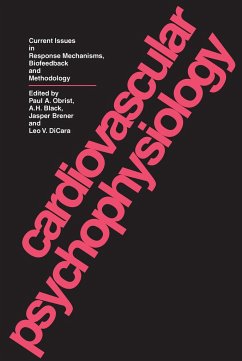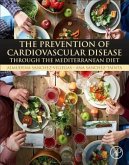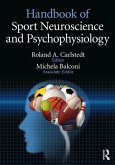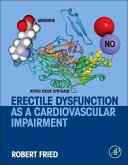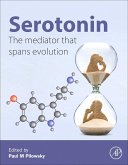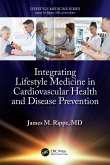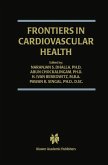Paul A. Obrist, A.H. Black, Jasper Brener
Cardiovascular Psychophysiology
Current Issues in Response Mechanisms, Biofeedback and Methodology
Paul A. Obrist, A.H. Black, Jasper Brener
Cardiovascular Psychophysiology
Current Issues in Response Mechanisms, Biofeedback and Methodology
- Broschiertes Buch
- Merkliste
- Auf die Merkliste
- Bewerten Bewerten
- Teilen
- Produkt teilen
- Produkterinnerung
- Produkterinnerung
The literature relating to the learned control of autonomic processes, especially cardiovascular processes demonstrating that the activities of visceral response systems may be modifi ed by operant reinforcement and biofeedback procedures, has grown exponentially. This research seems to show behavioral properties in the cardiovascular system that were previously believed to be exclusive attributes of the somatic response systems; the implications of this for possible therapeutic use have received widespread publicity. Questions remained unanswered-about the nature of "voluntary" control and…mehr
Andere Kunden interessierten sich auch für
![The Prevention of Cardiovascular Disease Through the Mediterranean Diet The Prevention of Cardiovascular Disease Through the Mediterranean Diet]() Almudena Sánchez VillegasThe Prevention of Cardiovascular Disease Through the Mediterranean Diet110,99 €
Almudena Sánchez VillegasThe Prevention of Cardiovascular Disease Through the Mediterranean Diet110,99 €![The Longevity Book The Longevity Book]() Cameron DiazThe Longevity Book20,99 €
Cameron DiazThe Longevity Book20,99 €![Handbook of Sport Neuroscience and Psychophysiology Handbook of Sport Neuroscience and Psychophysiology]() Handbook of Sport Neuroscience and Psychophysiology169,99 €
Handbook of Sport Neuroscience and Psychophysiology169,99 €![Erectile Dysfunction as a Cardiovascular Impairment Erectile Dysfunction as a Cardiovascular Impairment]() Robert FriedErectile Dysfunction as a Cardiovascular Impairment140,99 €
Robert FriedErectile Dysfunction as a Cardiovascular Impairment140,99 €![Serotonin Serotonin]() Serotonin196,99 €
Serotonin196,99 €![Integrating Lifestyle Medicine in Cardiovascular Health and Disease Prevention Integrating Lifestyle Medicine in Cardiovascular Health and Disease Prevention]() James M. RippeIntegrating Lifestyle Medicine in Cardiovascular Health and Disease Prevention39,99 €
James M. RippeIntegrating Lifestyle Medicine in Cardiovascular Health and Disease Prevention39,99 €![Frontiers in Cardiovascular Health Frontiers in Cardiovascular Health]() Naranjan S. Dhalla / Arun Chockalingam / H. Ivan Berkowitz / Pawan K. Singal (Hgg.)Frontiers in Cardiovascular Health125,99 €
Naranjan S. Dhalla / Arun Chockalingam / H. Ivan Berkowitz / Pawan K. Singal (Hgg.)Frontiers in Cardiovascular Health125,99 €-
-
-
The literature relating to the learned control of autonomic processes, especially cardiovascular processes demonstrating that the activities of visceral response systems may be modifi ed by operant reinforcement and biofeedback procedures, has grown exponentially. This research seems to show behavioral properties in the cardiovascular system that were previously believed to be exclusive attributes of the somatic response systems; the implications of this for possible therapeutic use have received widespread publicity. Questions remained unanswered-about the nature of "voluntary" control and the conditions necessary for establishing it, the reciprocal effects of conditioned changes in cardiovascular and psychological or behavioral functioning, the use of cardiovascular events to index behavioral states, and the principles and techniques whereby operant conditioning of the cardiovascular system can be clinically applied.
Produktdetails
- Produktdetails
- Verlag: Routledge / Taylor & Francis
- Seitenzahl: 680
- Erscheinungstermin: 30. Dezember 2007
- Englisch
- Abmessung: 229mm x 152mm x 40mm
- Gewicht: 965g
- ISBN-13: 9780202361468
- ISBN-10: 0202361462
- Artikelnr.: 23108312
- Herstellerkennzeichnung
- Books on Demand GmbH
- In de Tarpen 42
- 22848 Norderstedt
- info@bod.de
- 040 53433511
- Verlag: Routledge / Taylor & Francis
- Seitenzahl: 680
- Erscheinungstermin: 30. Dezember 2007
- Englisch
- Abmessung: 229mm x 152mm x 40mm
- Gewicht: 965g
- ISBN-13: 9780202361468
- ISBN-10: 0202361462
- Artikelnr.: 23108312
- Herstellerkennzeichnung
- Books on Demand GmbH
- In de Tarpen 42
- 22848 Norderstedt
- info@bod.de
- 040 53433511
Paul A. Obrist, A.H. Black, Jasper Brener, Leo V. DiCara
I: Cardiovascular Function and Measurement; 1: Mechanisms of the Cardiovascular Responses to Environmental Stressors; 2: A Selective Review of Central Neural Pathways Involved in Cardiovascular Control; 3: Psychophysiology of Peripheral Vascular Changes; 4: Indirect Indices of Contractile Force; 5: The Indirect Recording of Human Blood Pressure; 6: Techniques for Long-Term Direct Measurements of Cardiovascular Variables; II: Cardiovascular Function - Experimental Studies; 7: Analysis of the Final Common Path for Heart Rate Conditioning; 8: The Cardiac-Somatic Interaction; 9: Comparative Psychophysiology of the Electrodermal and Cardiac Control Systems; 10: The Relationship Between Learned and Unlearned Cardiovascular Responses; 11: Sympathetic and Parasympathetic Activity During Behavioral Hypertension in the Squirrel Monkey; III: Animal Operant Conditioning; 12: Operant Autonomic Conditioning: The Analysis of Response Mechanisms; 13: Respiratory and Somatomotor Factors Associated with Operant Conditioning of Cardiovascular Responses in Curarized Rats; 14: Some Critical Methodological Variables Involved in Visceral Learning; 15: The Learning of Autonomie Responses by Curarized Animals; 16: Visceral Learning: Recent Difficulties with Curarized Rats and Significant Problems for Human Research; 17: Comparative Studies of Operant Electrodermal and Heart Rate Conditioning in Curarized Rats; 18: Some Problems in the Use of Neuromuscular Blockade; IV: Human Operant Conditioning; 19: A General Model of Voluntary Control Applied to the Phenomena of Learned Cardiovascular Change; 20: Learned Control of Human Heart Rate in a Computer Directed Environment; 21: Toward a Theory of Voluntary Control of Response Patterns in the Cardiovascular System; 22: Opérant-Feedback Control of Human Blood Pressure: Some Clinical Issues; 23: Application of Operant Conditioning Techniques to the Control of the Cardiac Arrhythmias; V: Heart Rate - Attentional and Motivational Processes; 24: Cardiac Conditioning and Orienting in the Infant; 25: The Motivational Significance of Heart Rate; 26: Studies of Heart Rate and Other Bodily Processes in Sensorimotor Behavior; Summary
I: Cardiovascular Function and Measurement
1: Mechanisms of the Cardiovascular Responses to Environmental Stressors
2: A Selective Review of Central Neural Pathways Involved in Cardiovascular Control
3: Psychophysiology of Peripheral Vascular Changes
4: Indirect Indices of Contractile Force
5: The Indirect Recording of Human Blood Pressure
6: Techniques for Long-Term Direct Measurements of Cardiovascular Variables
II: Cardiovascular Function - Experimental Studies
7: Analysis of the Final Common Path for Heart Rate Conditioning
8: The Cardiac-Somatic Interaction
9: Comparative Psychophysiology of the Electrodermal and Cardiac Control Systems
10: The Relationship Between Learned and Unlearned Cardiovascular Responses
11: Sympathetic and Parasympathetic Activity During Behavioral Hypertension in the Squirrel Monkey
III: Animal Operant Conditioning
12: Operant Autonomic Conditioning: The Analysis of Response Mechanisms
13: Respiratory and Somatomotor Factors Associated with Operant Conditioning of Cardiovascular Responses in Curarized Rats
14: Some Critical Methodological Variables Involved in Visceral Learning
15: The Learning of Autonomie Responses by Curarized Animals
16: Visceral Learning: Recent Difficulties with Curarized Rats and Significant Problems for Human Research
17: Comparative Studies of Operant Electrodermal and Heart Rate Conditioning in Curarized Rats
18: Some Problems in the Use of Neuromuscular Blockade
IV: Human Operant Conditioning
19: A General Model of Voluntary Control Applied to the Phenomena of Learned Cardiovascular Change
20: Learned Control of Human Heart Rate in a Computer Directed Environment
21: Toward a Theory of Voluntary Control of Response Patterns in the Cardiovascular System
22: Opérant-Feedback Control of Human Blood Pressure: Some Clinical Issues
23: Application of Operant Conditioning Techniques to the Control of the Cardiac Arrhythmias
V: Heart Rate - Attentional and Motivational Processes
24: Cardiac Conditioning and Orienting in the Infant
25: The Motivational Significance of Heart Rate
26: Studies of Heart Rate and Other Bodily Processes in Sensorimotor Behavior
Summary
1: Mechanisms of the Cardiovascular Responses to Environmental Stressors
2: A Selective Review of Central Neural Pathways Involved in Cardiovascular Control
3: Psychophysiology of Peripheral Vascular Changes
4: Indirect Indices of Contractile Force
5: The Indirect Recording of Human Blood Pressure
6: Techniques for Long-Term Direct Measurements of Cardiovascular Variables
II: Cardiovascular Function - Experimental Studies
7: Analysis of the Final Common Path for Heart Rate Conditioning
8: The Cardiac-Somatic Interaction
9: Comparative Psychophysiology of the Electrodermal and Cardiac Control Systems
10: The Relationship Between Learned and Unlearned Cardiovascular Responses
11: Sympathetic and Parasympathetic Activity During Behavioral Hypertension in the Squirrel Monkey
III: Animal Operant Conditioning
12: Operant Autonomic Conditioning: The Analysis of Response Mechanisms
13: Respiratory and Somatomotor Factors Associated with Operant Conditioning of Cardiovascular Responses in Curarized Rats
14: Some Critical Methodological Variables Involved in Visceral Learning
15: The Learning of Autonomie Responses by Curarized Animals
16: Visceral Learning: Recent Difficulties with Curarized Rats and Significant Problems for Human Research
17: Comparative Studies of Operant Electrodermal and Heart Rate Conditioning in Curarized Rats
18: Some Problems in the Use of Neuromuscular Blockade
IV: Human Operant Conditioning
19: A General Model of Voluntary Control Applied to the Phenomena of Learned Cardiovascular Change
20: Learned Control of Human Heart Rate in a Computer Directed Environment
21: Toward a Theory of Voluntary Control of Response Patterns in the Cardiovascular System
22: Opérant-Feedback Control of Human Blood Pressure: Some Clinical Issues
23: Application of Operant Conditioning Techniques to the Control of the Cardiac Arrhythmias
V: Heart Rate - Attentional and Motivational Processes
24: Cardiac Conditioning and Orienting in the Infant
25: The Motivational Significance of Heart Rate
26: Studies of Heart Rate and Other Bodily Processes in Sensorimotor Behavior
Summary
I: Cardiovascular Function and Measurement; 1: Mechanisms of the Cardiovascular Responses to Environmental Stressors; 2: A Selective Review of Central Neural Pathways Involved in Cardiovascular Control; 3: Psychophysiology of Peripheral Vascular Changes; 4: Indirect Indices of Contractile Force; 5: The Indirect Recording of Human Blood Pressure; 6: Techniques for Long-Term Direct Measurements of Cardiovascular Variables; II: Cardiovascular Function - Experimental Studies; 7: Analysis of the Final Common Path for Heart Rate Conditioning; 8: The Cardiac-Somatic Interaction; 9: Comparative Psychophysiology of the Electrodermal and Cardiac Control Systems; 10: The Relationship Between Learned and Unlearned Cardiovascular Responses; 11: Sympathetic and Parasympathetic Activity During Behavioral Hypertension in the Squirrel Monkey; III: Animal Operant Conditioning; 12: Operant Autonomic Conditioning: The Analysis of Response Mechanisms; 13: Respiratory and Somatomotor Factors Associated with Operant Conditioning of Cardiovascular Responses in Curarized Rats; 14: Some Critical Methodological Variables Involved in Visceral Learning; 15: The Learning of Autonomie Responses by Curarized Animals; 16: Visceral Learning: Recent Difficulties with Curarized Rats and Significant Problems for Human Research; 17: Comparative Studies of Operant Electrodermal and Heart Rate Conditioning in Curarized Rats; 18: Some Problems in the Use of Neuromuscular Blockade; IV: Human Operant Conditioning; 19: A General Model of Voluntary Control Applied to the Phenomena of Learned Cardiovascular Change; 20: Learned Control of Human Heart Rate in a Computer Directed Environment; 21: Toward a Theory of Voluntary Control of Response Patterns in the Cardiovascular System; 22: Opérant-Feedback Control of Human Blood Pressure: Some Clinical Issues; 23: Application of Operant Conditioning Techniques to the Control of the Cardiac Arrhythmias; V: Heart Rate - Attentional and Motivational Processes; 24: Cardiac Conditioning and Orienting in the Infant; 25: The Motivational Significance of Heart Rate; 26: Studies of Heart Rate and Other Bodily Processes in Sensorimotor Behavior; Summary
I: Cardiovascular Function and Measurement
1: Mechanisms of the Cardiovascular Responses to Environmental Stressors
2: A Selective Review of Central Neural Pathways Involved in Cardiovascular Control
3: Psychophysiology of Peripheral Vascular Changes
4: Indirect Indices of Contractile Force
5: The Indirect Recording of Human Blood Pressure
6: Techniques for Long-Term Direct Measurements of Cardiovascular Variables
II: Cardiovascular Function - Experimental Studies
7: Analysis of the Final Common Path for Heart Rate Conditioning
8: The Cardiac-Somatic Interaction
9: Comparative Psychophysiology of the Electrodermal and Cardiac Control Systems
10: The Relationship Between Learned and Unlearned Cardiovascular Responses
11: Sympathetic and Parasympathetic Activity During Behavioral Hypertension in the Squirrel Monkey
III: Animal Operant Conditioning
12: Operant Autonomic Conditioning: The Analysis of Response Mechanisms
13: Respiratory and Somatomotor Factors Associated with Operant Conditioning of Cardiovascular Responses in Curarized Rats
14: Some Critical Methodological Variables Involved in Visceral Learning
15: The Learning of Autonomie Responses by Curarized Animals
16: Visceral Learning: Recent Difficulties with Curarized Rats and Significant Problems for Human Research
17: Comparative Studies of Operant Electrodermal and Heart Rate Conditioning in Curarized Rats
18: Some Problems in the Use of Neuromuscular Blockade
IV: Human Operant Conditioning
19: A General Model of Voluntary Control Applied to the Phenomena of Learned Cardiovascular Change
20: Learned Control of Human Heart Rate in a Computer Directed Environment
21: Toward a Theory of Voluntary Control of Response Patterns in the Cardiovascular System
22: Opérant-Feedback Control of Human Blood Pressure: Some Clinical Issues
23: Application of Operant Conditioning Techniques to the Control of the Cardiac Arrhythmias
V: Heart Rate - Attentional and Motivational Processes
24: Cardiac Conditioning and Orienting in the Infant
25: The Motivational Significance of Heart Rate
26: Studies of Heart Rate and Other Bodily Processes in Sensorimotor Behavior
Summary
1: Mechanisms of the Cardiovascular Responses to Environmental Stressors
2: A Selective Review of Central Neural Pathways Involved in Cardiovascular Control
3: Psychophysiology of Peripheral Vascular Changes
4: Indirect Indices of Contractile Force
5: The Indirect Recording of Human Blood Pressure
6: Techniques for Long-Term Direct Measurements of Cardiovascular Variables
II: Cardiovascular Function - Experimental Studies
7: Analysis of the Final Common Path for Heart Rate Conditioning
8: The Cardiac-Somatic Interaction
9: Comparative Psychophysiology of the Electrodermal and Cardiac Control Systems
10: The Relationship Between Learned and Unlearned Cardiovascular Responses
11: Sympathetic and Parasympathetic Activity During Behavioral Hypertension in the Squirrel Monkey
III: Animal Operant Conditioning
12: Operant Autonomic Conditioning: The Analysis of Response Mechanisms
13: Respiratory and Somatomotor Factors Associated with Operant Conditioning of Cardiovascular Responses in Curarized Rats
14: Some Critical Methodological Variables Involved in Visceral Learning
15: The Learning of Autonomie Responses by Curarized Animals
16: Visceral Learning: Recent Difficulties with Curarized Rats and Significant Problems for Human Research
17: Comparative Studies of Operant Electrodermal and Heart Rate Conditioning in Curarized Rats
18: Some Problems in the Use of Neuromuscular Blockade
IV: Human Operant Conditioning
19: A General Model of Voluntary Control Applied to the Phenomena of Learned Cardiovascular Change
20: Learned Control of Human Heart Rate in a Computer Directed Environment
21: Toward a Theory of Voluntary Control of Response Patterns in the Cardiovascular System
22: Opérant-Feedback Control of Human Blood Pressure: Some Clinical Issues
23: Application of Operant Conditioning Techniques to the Control of the Cardiac Arrhythmias
V: Heart Rate - Attentional and Motivational Processes
24: Cardiac Conditioning and Orienting in the Infant
25: The Motivational Significance of Heart Rate
26: Studies of Heart Rate and Other Bodily Processes in Sensorimotor Behavior
Summary

